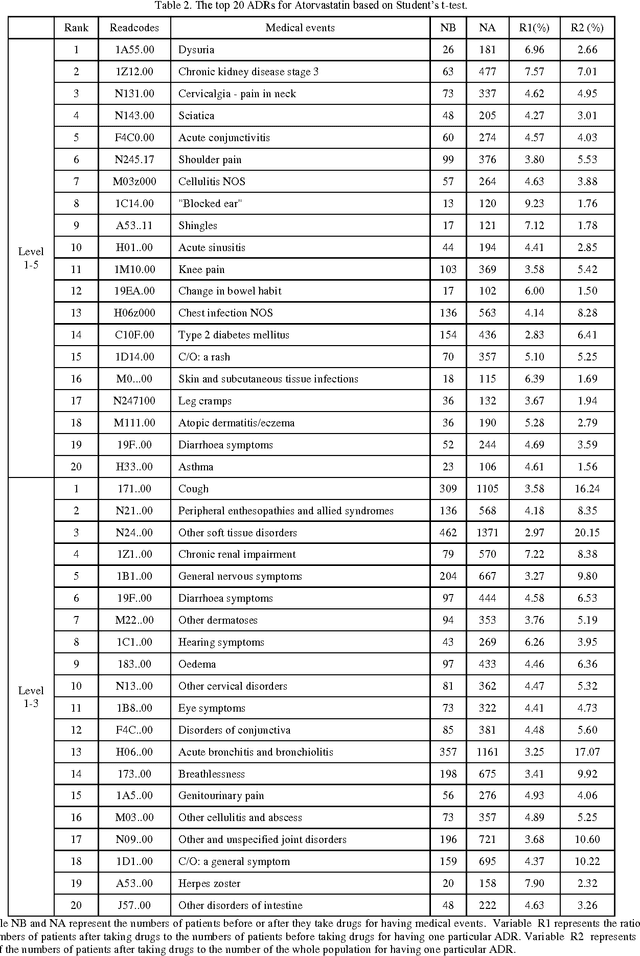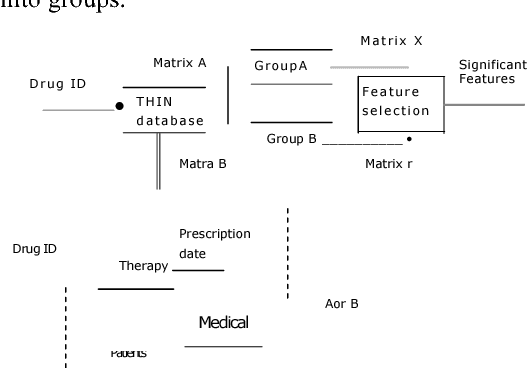Yihui Liu
Feature selection in detection of adverse drug reactions from the Health Improvement Network (THIN) database
Sep 02, 2014



Abstract:Adverse drug reaction (ADR) is widely concerned for public health issue. ADRs are one of most common causes to withdraw some drugs from market. Prescription event monitoring (PEM) is an important approach to detect the adverse drug reactions. The main problem to deal with this method is how to automatically extract the medical events or side effects from high-throughput medical events, which are collected from day to day clinical practice. In this study we propose a novel concept of feature matrix to detect the ADRs. Feature matrix, which is extracted from big medical data from The Health Improvement Network (THIN) database, is created to characterize the medical events for the patients who take drugs. Feature matrix builds the foundation for the irregular and big medical data. Then feature selection methods are performed on feature matrix to detect the significant features. Finally the ADRs can be located based on the significant features. The experiments are carried out on three drugs: Atorvastatin, Alendronate, and Metoclopramide. Major side effects for each drug are detected and better performance is achieved compared to other computerized methods. The detected ADRs are based on computerized methods, further investigation is needed.
Detect adverse drug reactions for drug Alendronate
Jul 04, 2013

Abstract:Adverse drug reaction (ADR) is widely concerned for public health issue. In this study we propose an original approach to detect the ADRs using feature matrix and feature selection. The experiments are carried out on the drug Simvastatin. Major side effects for the drug are detected and better performance is achieved compared to other computerized methods. The detected ADRs are based on the computerized method, further investigation is needed.
Wavelet feature extraction and genetic algorithm for biomarker detection in colorectal cancer data
May 31, 2013

Abstract:Biomarkers which predict patient's survival can play an important role in medical diagnosis and treatment. How to select the significant biomarkers from hundreds of protein markers is a key step in survival analysis. In this paper a novel method is proposed to detect the prognostic biomarkers of survival in colorectal cancer patients using wavelet analysis, genetic algorithm, and Bayes classifier. One dimensional discrete wavelet transform (DWT) is normally used to reduce the dimensionality of biomedical data. In this study one dimensional continuous wavelet transform (CWT) was proposed to extract the features of colorectal cancer data. One dimensional CWT has no ability to reduce dimensionality of data, but captures the missing features of DWT, and is complementary part of DWT. Genetic algorithm was performed on extracted wavelet coefficients to select the optimized features, using Bayes classifier to build its fitness function. The corresponding protein markers were located based on the position of optimized features. Kaplan-Meier curve and Cox regression model were used to evaluate the performance of selected biomarkers. Experiments were conducted on colorectal cancer dataset and several significant biomarkers were detected. A new protein biomarker CD46 was found to significantly associate with survival time.
 Add to Chrome
Add to Chrome Add to Firefox
Add to Firefox Add to Edge
Add to Edge